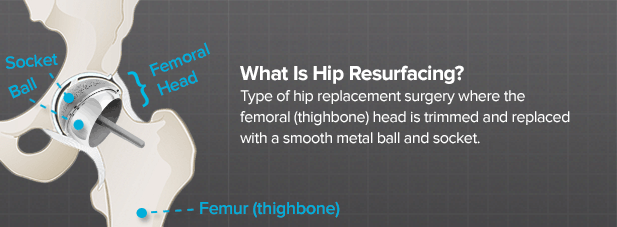
Hip Surface Replacement or Hip Resurfacing is a type of hip replacement procedure in which the femoral (thighbone) head is trimmed and capped with a metal ball that moves in a metal socket, as opposed to being removed completely, like during a total hip replacement. Your surgeon may opt to use digital templating software before your surgery to help pre-operatively plan your operation and calculate which ball and socket is best for you.
This type of surgical treatment may be recommended if you are in advanced stages of debilitating arthritis and have explored all of your non-surgical options. Similar to total hip replacement, hip resurfacing is not recommended for all patients. Your doctor may tell you that hip resurfacing is best for younger (under 60), larger-framed patients with strong, healthy bones. Your doctor will evaluate if you are a candidate for hip resurfacing based on your specific diagnosis, medical history and risk factors.
The pros and cons of hip resurfacing is a topic of research and controversy among orthopedic surgeons. We’d like to share an overview with you here; however, we encourage you to do more research if considering hip resurfacing as your best surgical option.
Pros:
Cons:
Understand software-guided hip surgery »
Prepare for the before and after of hip surgery »
Explore digital templating software »